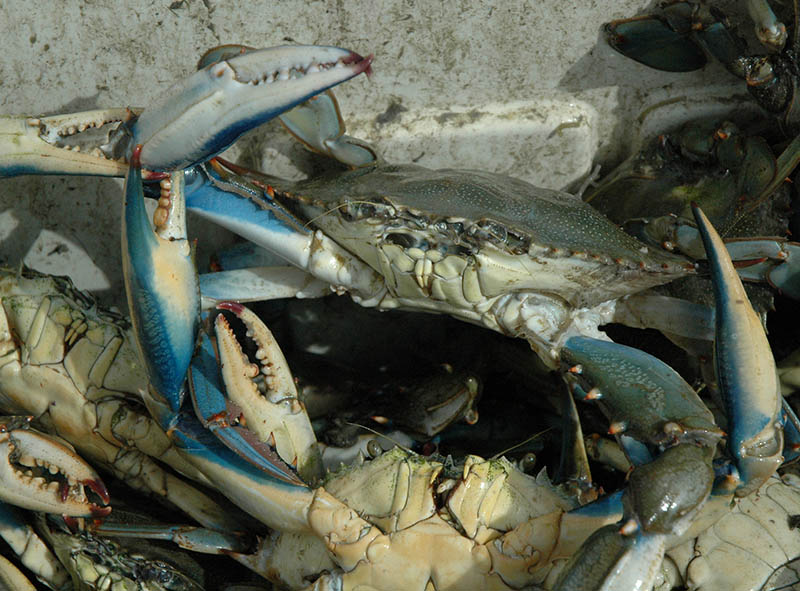Blue crab, one of North Carolina’s most valuable fisheries, is about to get a makeover.
Annually the blue crab harvest accounts for more than 27 million pounds with a value of over $26 million. But these figures will likely change following adoption of the management measures proposed by the North Carolina Marine Fisheries Commission.
Cutbacks include closed seasons, establishment sanctuary areas and new size limits on female crabs.
According to the commission, “reductions in harvest are necessary because a recent North Carolina stock assessment for blue crab determined the stock is overfished and overfishing is occurring.”
Jason Rock, DMF biologist supervisor, says the management measures for blue crab are designed to end overfishing.
One of the biggest proposed changes is establishing closed seasons for the harvest, with the season closed in January and implementation of a 6.75-inch size limit for mature female crabs for northern areas. The southern part of the state faces a March 1-15 closure.
The plan includes a statewide ban on the harvest of immature female hard crabs.
“Management focuses in large part on protecting female crabs as well as habitat to improve spawning stock numbers,” Rock says.
Other aspects of the draft plan are to reduce the crab bycatch allowance for oyster dredges, develop a specific crab pot funnel design to reduce turtle interactions and work on water quality issues in coordination with other agencies and states.
The measures also prohibit crab dredges and crab trawls in areas where shrimp trawls are already prohibited, as well as establish a series of new spawning sanctuaries.
North Carolina law mandates that fishery management plans include measures to end overfishing within two years of adoption and rebuild the stock to achieve sustainable harvest within 10 years of adoption.
The options addressing sustainable harvest are predicted to reduce harvest by 3.1 percent meeting the mandated reductions.
The Marine Fisheries Commission is scheduled to consider final adoption of the draft plan in February. Approved measures would be adopted shortly thereafter.







